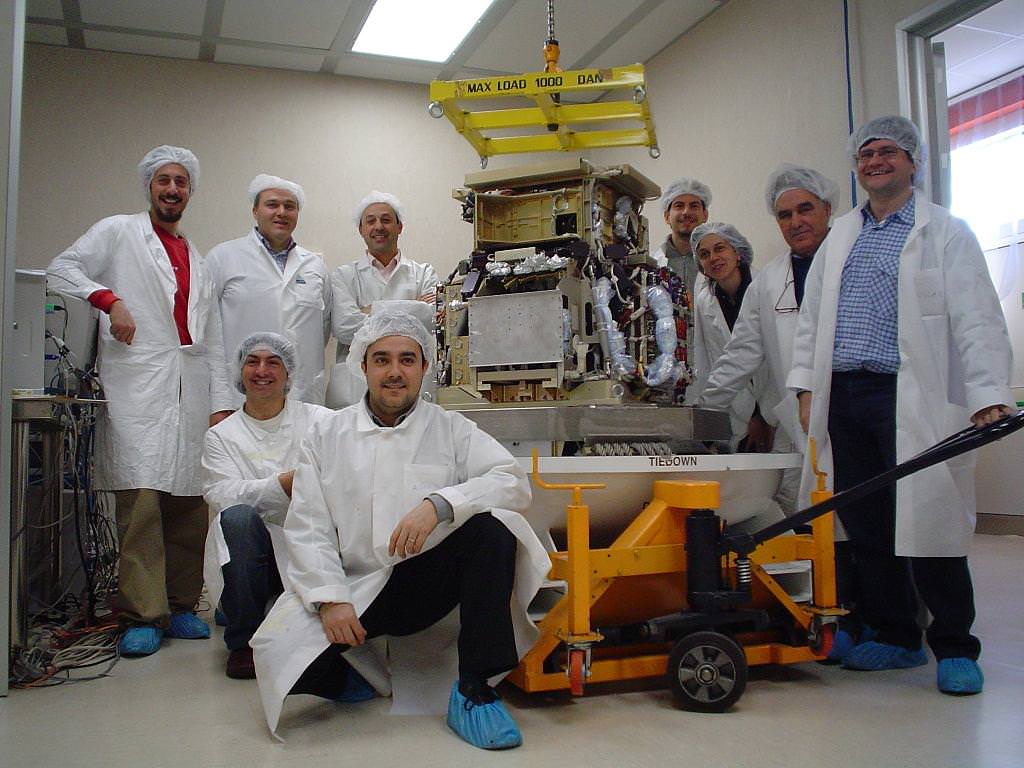[/caption]
When it comes to planets with rings, we know the answer: Jupiter, Saturn, Uranus, and Neptune. But new findings from the PAMELA experiment show that Earth has a ring system, too… One made up of geomagnetically trapped cosmic ray antiprotons.
“The existence of a significant flux of antiprotons confined to Earth’s magnetosphere has been considered in several theoretical works.” says team leader, O. Adriani of the University of Florence Department of Physics. “These antiparticles are produced in nuclear interactions of energetic cosmic rays with the terrestrial atmosphere and accumulate in the geomagnetic field at altitudes of several hundred kilometers.”
The PAMELA experiment – short for Payload for Antimatter Exploration and Light-nuclei Astrophysics – is based on an international collaboration involving about 100 physicists. Its state-of-the-art equipment was designed to investigate the nature of dark matter, the apparent absence of cosmological antimatter and the origin and evolution of matter in the galaxy. Utilizing a permanent magnet spectrometer with a variety of specialized detectors, PAMELA whips around Earth on a highly inclined orbit.
“The satellite orbit (70 degree inclination and 350–610 km altitude) allows PAMELA to perform a very detailed measurement of the cosmic radiation in different regions of Earth’s magnetosphere, providing information about the nature and energy spectra of sub-cutoff particles.” says Adriani. “The satellite orbit passes through the South Atlantic Anomaly (SAA), allowing the study of geomagnetically trapped particles in the inner radiation belt.”
From its subdetectors, PAMELA dished up a serving of antiprotons, but it wasn’t an easy job. “Antiprotons in the selected energy range are likely to annihilate inside the calorimeter, thus leaving a clear signature.” says the team. “The longitudinal and transverse segmentation of the calorimeter is exploited to allow the shower development to be characterized. These selections are combined with dE/dx measurements from individual strips in the silicon detector planes to allow electromagnetic showers to be identified with very high accuracy.”
For 850 days, the detectors collected data and compared it against simulations. The trapped antiprotons were highly dependent on angular collection, directional response function on the satellite orbital position and on its orientation relative to the geomagnetic field. “All the identified antiprotons, characterized by a pitch angle near 90 deg, were found to spiral around field lines, bounce between mirror points, and also perform a slow longitudinal drift around the Earth, for a total path length amounting to several Earth radii.” said the team. “PAMELA results allow CR transport models to be tested in the terrestrial atmosphere and significantly constrain predictions from trapped antiproton models, reducing uncertainties concerning the antiproton production spectrum in Earth’s magnetosphere.”
Original Story Source: Astrophysical Journal Newsletters.


That link to the “Original Story Source” ends at a bloody pay-wall. However, thanks to arXiv, here’s the link to the free paper:
The discovery of geomagnetically trapped cosmic ray antiprotons.
I remember reading some sci-fi literature discussing mining anti-protons within Earth’s magnetosphere for powering space ships. Nice to see this theory proven.
I remember reading some sci-fi literature discussing mining anti-protons within Earth’s magnetosphere for powering space ships. Nice to see this theory proven.
Interesting there is this residual from cosmic ray bombardments. I will confess I can’t think of how this might tell us something about high energy physics with cosmic rays.
LC
Relativistic Perturbation Mantle
This 12 foot sphere of stabilized antimatter with Liquid Oxygen is what is releasing the antimatter for this anti-ring to build around Earth. Its made by lightning in a collider process of Hydrogen and collects in beam to produce these spheres that had no name until now.